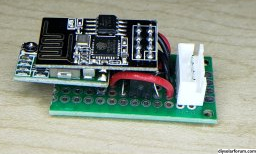curiouscarbon
Science Penguin
- Joined
- Jun 29, 2020
- Messages
- 3,029
wow that looks really nice.Solar Assistant combines the data from my EASun 8kW inverter and Victron Smart Shunt. Integrated via MQTT with Home Assistant (and Node Red).
Automations manage the Output Source priority, the Charge Source Priority and the Maximal Grid Charge Current settings. There is also a Storm Mode which can be activated by choice or set up to trigger automatically if needed.
Without SA I doubt these would be so easily achieved.
I don't however look at the SA dashboard much. Most of my data is viewed via Home Assistant, and also data captured with InfluxDB and use Grafana for granular view/analysis.
View attachment 168073
Meanwhile it combines with data from my grid PV system as well as other monitoring (IoTaWatt) to provide a larger picture on live power feed:
View attachment 168075
And energy supply and consumption. Below shows the off-grid PV data (from Solar Assistant) and grid PV (Fronius) combined:
View attachment 168077
thanks for mentioning victron support specifically; their website does not list it clearly.




